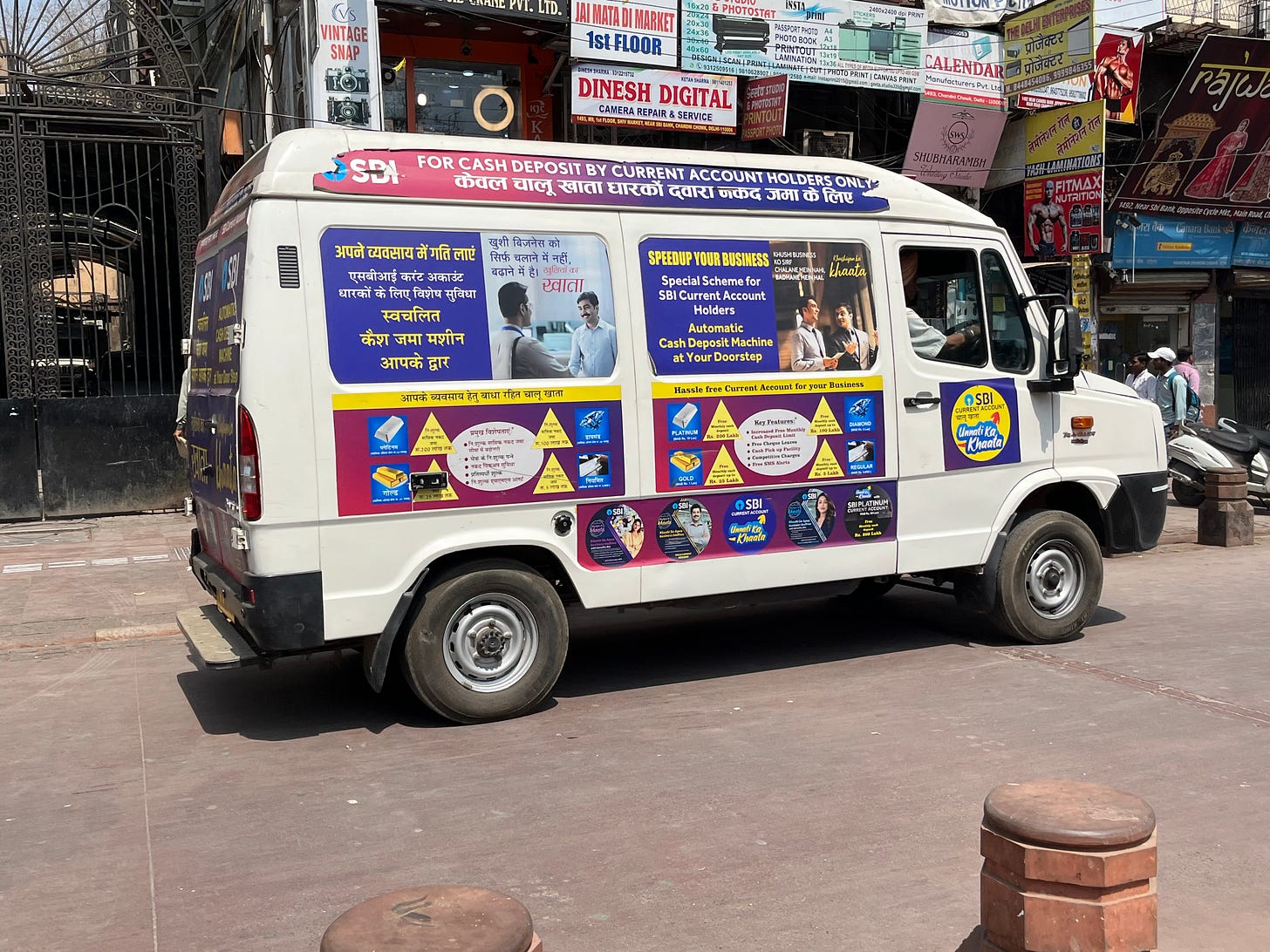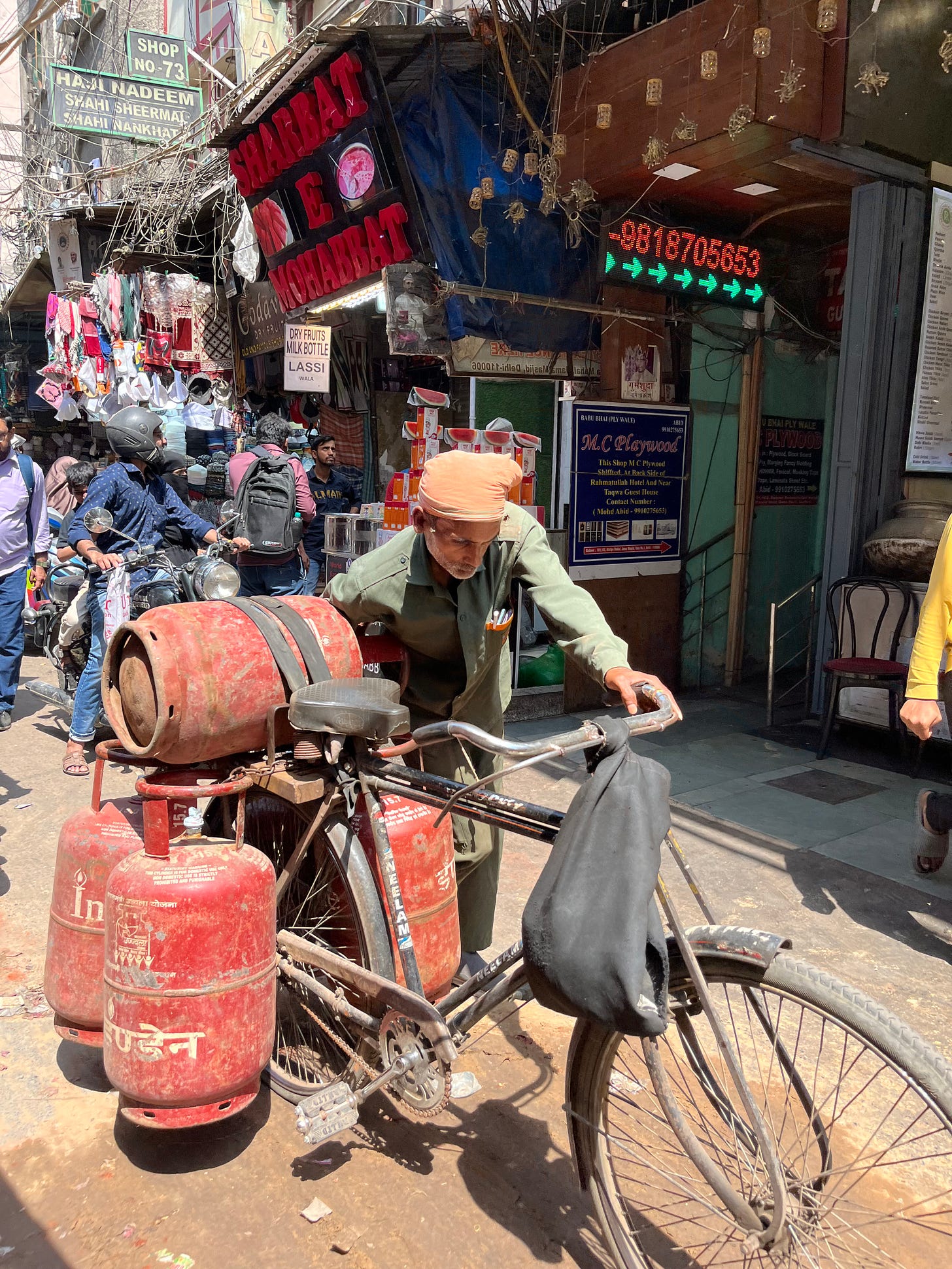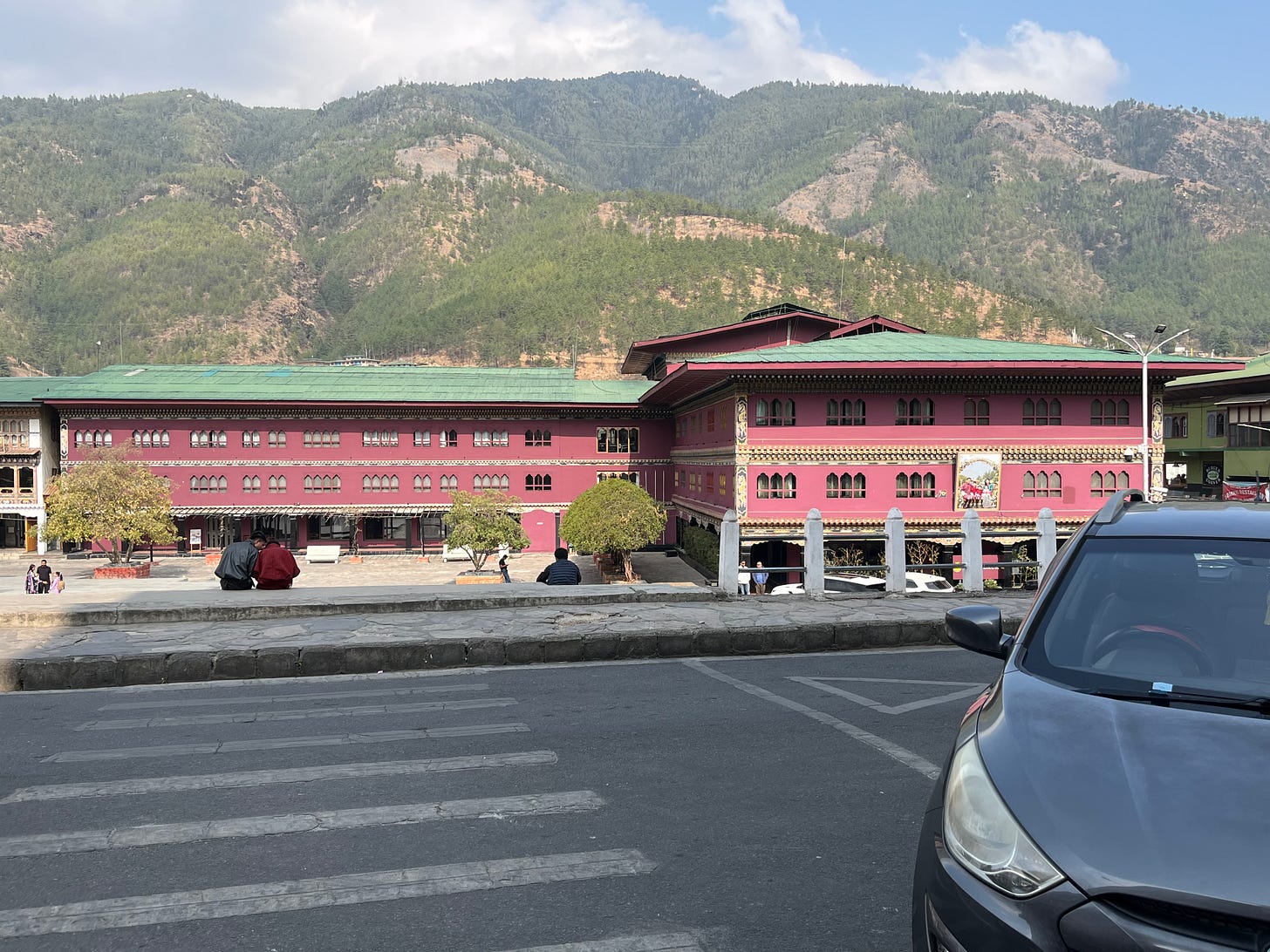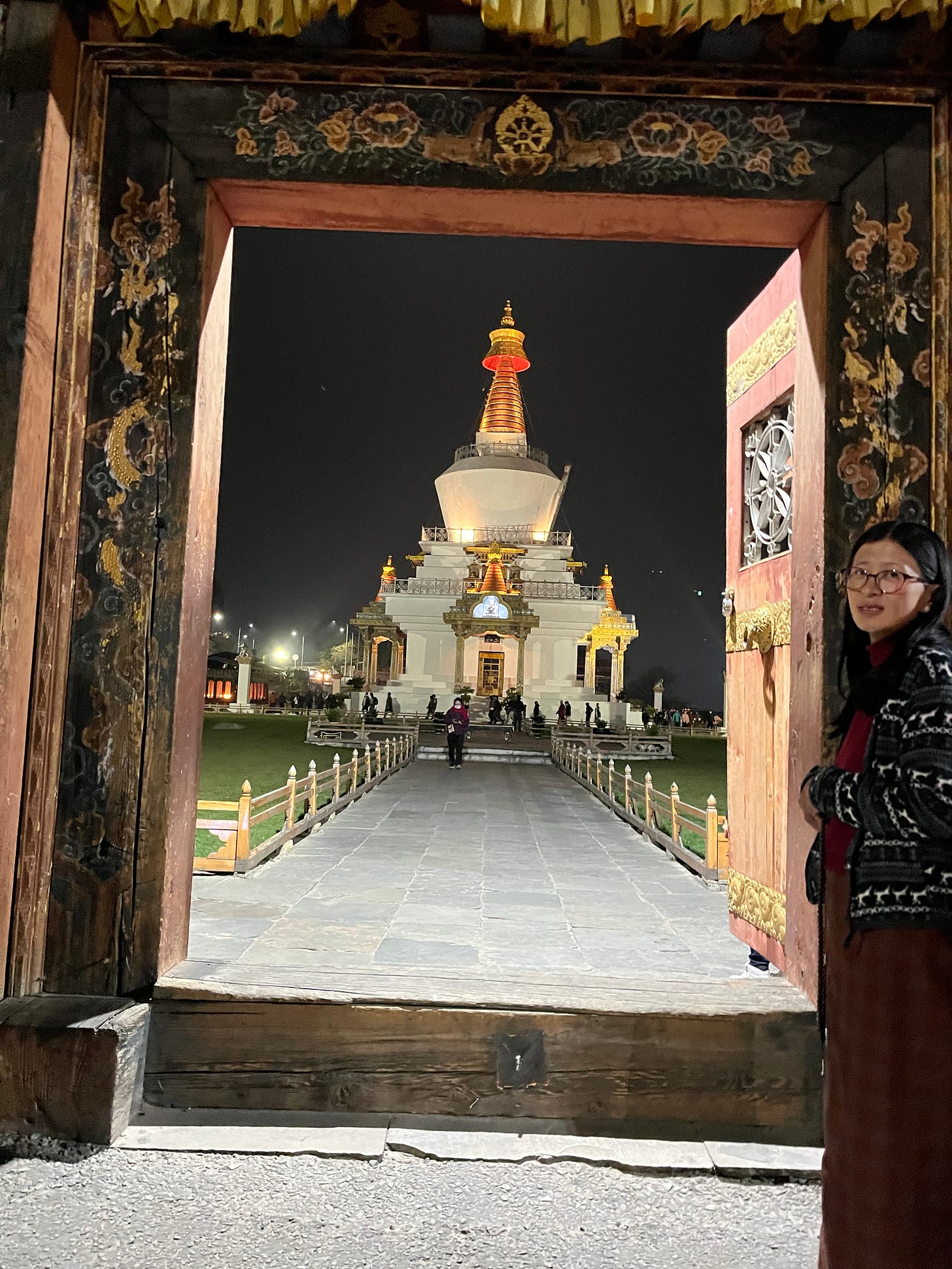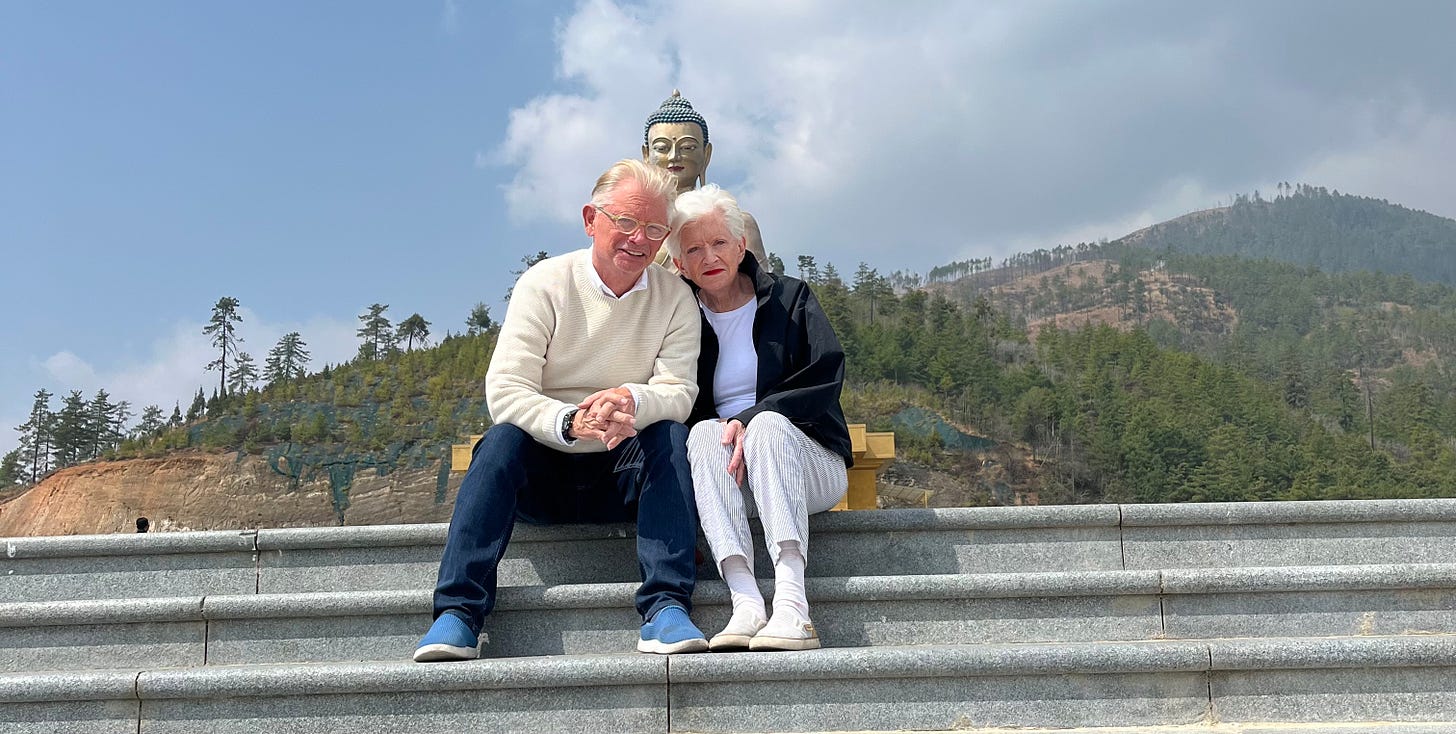The Awards Tour Part Two
42,000 miles, 13 flights, five countries, 24 days, five meetings, three awards ceremonies, and 15 meetings later
Part Two: South Africa Once, India Twice, and Bhutan for the First Time
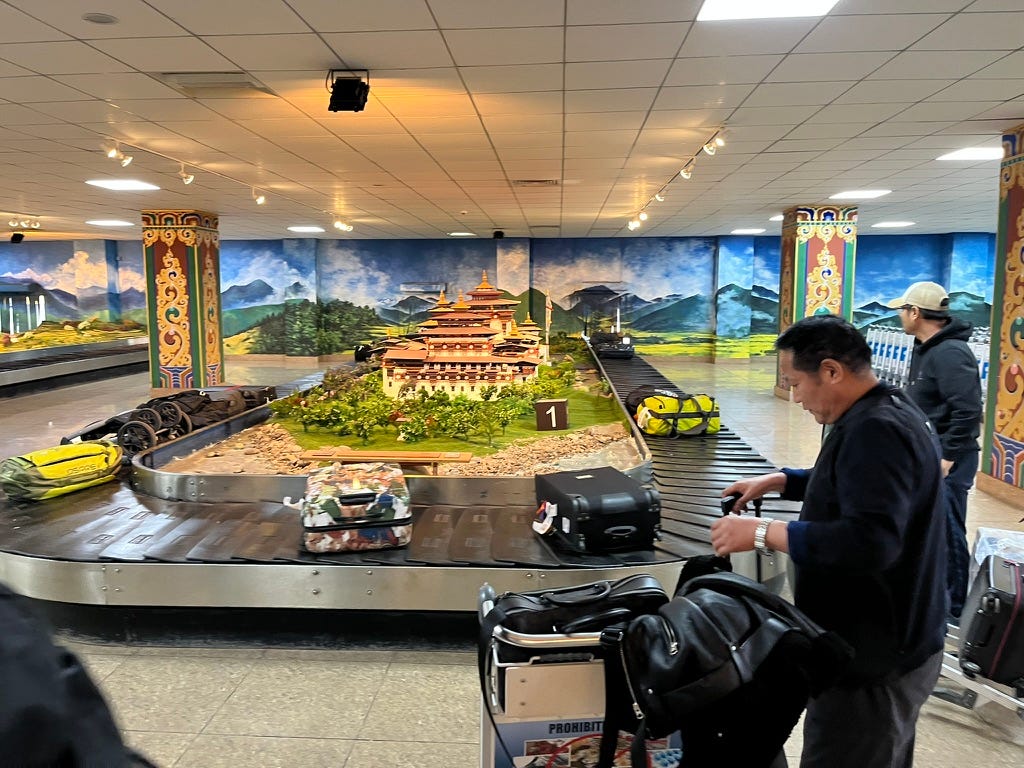
Karen and I have been to South Africa and India numerous times in the past. We’ve ridden motorcycles around much of South Africa, gone on three safaris, and visited most of its major cities including Pretoria, Johannesburg and Cape Town. South Africa has about 40M people. We’ve been to India even more often, always on business, and have been to half a dozen cities spread across its northern region.
I’ve done speaking tours for the State Department, attended numerous conferences and meetings, and been to very rural farms in Bengal. One of the best nights we ever had was crashing an Indian wedding celebration in a Delhi hotel and partying till two the next morning. Population 1.4Billion
Bhutan was a complete unknown. I immediately wanted to go once I read that it refers to its gross national product as Gross National Happiness. How can you not want to visit there? Bhutan is a very tiny country in the Himalayas between India, Nepal and Tibet. Totally closed off from the rest of the world until very recently (they didn’t have TV of any kind until the mid-70s). Population 750K. So, when I had to go to Delhi for one of the JTF Awards events, KR and I squeezed two days into the schedule to fly to Bhutan and back to Delhi before going to the next stop (Namibia).
India is India:). The people at the top of the pyramid live very very well. I would even say extraordinary well. However there’s not much of a middle, so most everyone else is near the bottom. It overwhelms your senses. People, Tuk Tuks, cars, motorcycles, bicycles and cows are everywhere, going in every direction at the same time. All this happens up close and personal as one’s personal space is minute.
India is also the world’s largest democracy and capitalist system. Everyone is hustling and striving to get to the next level. All conversations, especially with perceived rich Americans like us, have a monetary goal. Their entrepreneurs are not shy about requesting help.
It’s inspiring to be among so many young people trying to build a better life for themselves by starting a cleantech company. (As a reference point, the very last thing parents want their children to do is start a company. They’ve spent a ton of money on universities, so they want their children to get a good job at a large, established technology company). Sometimes it’s overwhelming as so many young entrepreneurs are clamoring for your attention. During this trip, I had a chance to speak with, advise, judge and share business and life stories with hundreds of young people. It felt great, but also a bit depressing as I knew I wasn’t making more than a sand pebble-sized impact.
Fighter Pilot Flying Skills
The airport at Paro, Bhutan’s only commercial airport, is ranked as one of the most dangerous in the world. Nestled in the Himalayas (and I mean nestled as in the tip of the wing is very very close to the mountain nestled), you can only fly in during the mornings to avoid the afternoon winds. We took off at 4:15AM from Delhi one Tuesday.
It’s reported that only about twenty pilots are qualified to fly in and out of Paro. For good reason. Once we got close to Paro, our Drukair flight started to descend into the clouds only to abruptly change course and pull up. By the way, flying in the clouds in Bhutan or Nepal isn’t that high up as the Himalayas poke above them in numerous places. The pilot comes over the intercom, “We can’t land yet due to low visibility around Paro. We’ll just circle for twenty or so minutes before we try again.” Great.
Sure enough, we start our descent (more accurately described as a dive) twenty minutes later in heavy mist. He can see through this? We then execute a series of very sharp turns, both left and right, as we thread our way through the valley. The mountain and occasional houses can be seen right off the wings. There is no margin for error. Then, we quickly level out and make the final dive for the short runway. Boom! We’re on the ground. Passengers start clapping. It was one of those flights.
The Land of Happiness
We have a day and a half to see the Land of Happiness. Practically speaking, we see the mountains on the hour-long ride to and from the capital city, Thimpu, and a day exploring museums, schools, craft shops and the city itself. We were jammed for time, so we hired a guide, car and driver from the Internet and set off to see as much as we could. The pictures tell the story, but here’s my summary.
We were right in the middle of the Himalayas but couldn’t see them. All streets went up or down or paralleled each other one step higher or lower. All the buildings were similar as it’s the law all buildings must be in the traditional style. Thimpu seemed smaller than it really was because the mountains closed in. Culture and Buddhism are at the center of daily life. Men and women dress in traditional clothing, there are prayer bells, temples (big and small, all shapes, and a variety of types.) It felt more like a vibe, or spirit than a religion. Everyone seemed calm. What’s with that? They are resource poor, so much of what Bhutanese consume they make, often in the same way for generations.
The government – elected President and King/Queen are forward thinkers in most every way. The King gave up power not that long ago (read that again, he gave up power willingly) and Bhutan became a democracy. Power is split between the King and the President, but I’m not sure of the ins and outs. It’s pretty much a socialist society with health care and education provided for free. Like Nepal, the economy is 90% tourism. There’s a bit of mining, and they generate all of their electricity through one very large damn. Selling excess electricity from this dam to India is the country’s largest source of income.
Food, drink and hotels
The food is BASIC and way too strange for KR and I. Our tour booked what looked to be a Soviet era hotel, in which the “Gift Shop” sign above the door misrepresented what used to be there – now stuffed with spare furniture. Since I could not find anything familiar to drink, I tried K5 Scotch whiskey named for the fifth and current king. Much like a Corona, I’ve never tasted scotch before and K5 was wimpy enough to become my go-to cocktail. K5 is only served in Bhutan, so I guess my scotch drinking days are over.
The People
I expected them to be dancing in the street, a Himalayan version of the Sound of Music. The kids were certainly dancing, playing darts, shooting bows and arrow and generally looked pretty carefree. Everyone else looked normal : ) Bhutanese are very courteous, quiet, and less concerned with our Western materialism than finding the right vibe and keeping all bad thoughts and spirits away for another day. Its tough to argue that this doesn’t make sense in our 21st Century world. While these days Bhutan is no longer in the 6th Century, it hasn’t caught up just yet and doesn’t seem to be interested in running faster to do so.
Here’s what India and Bhutan looked like.


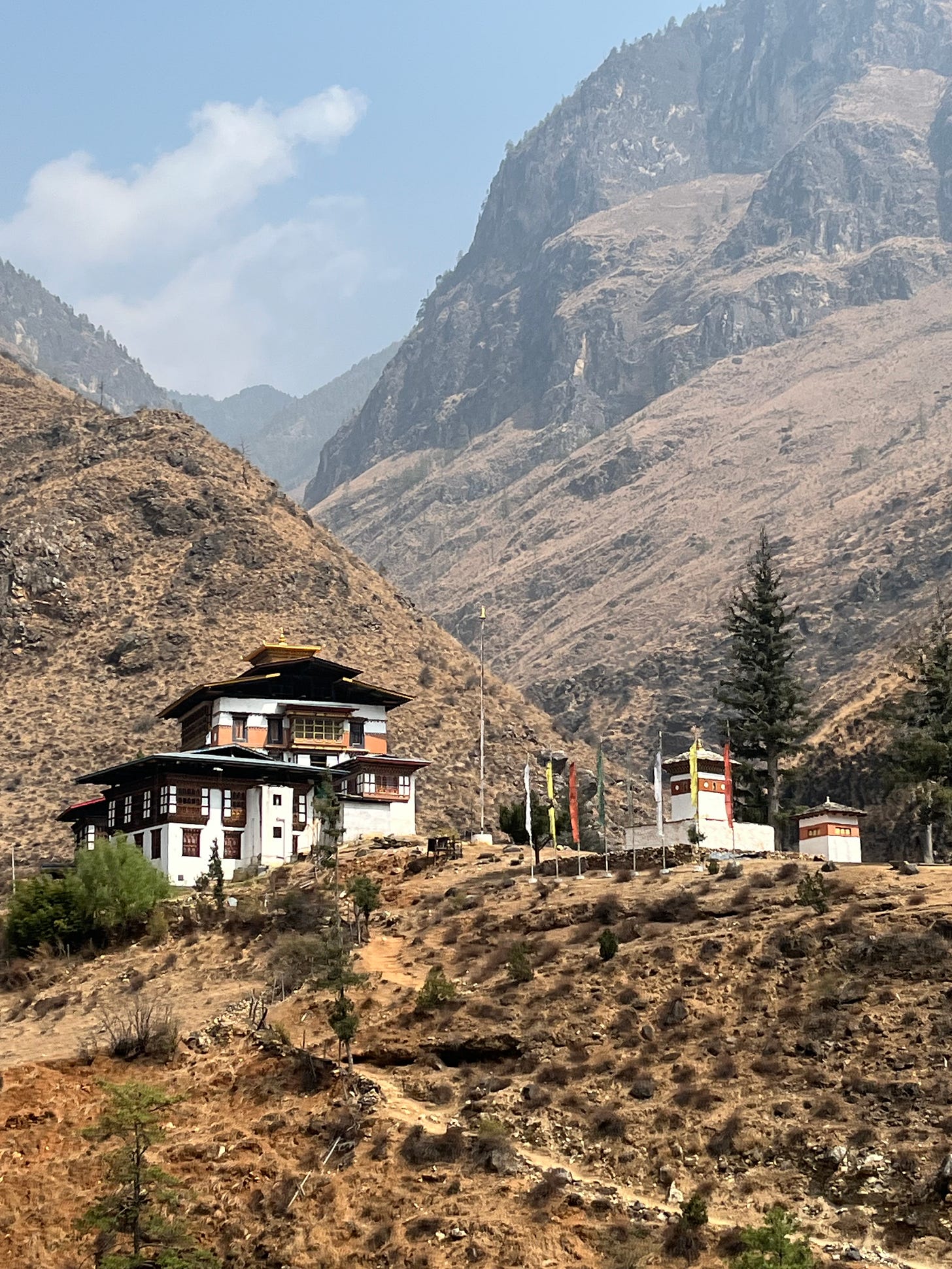
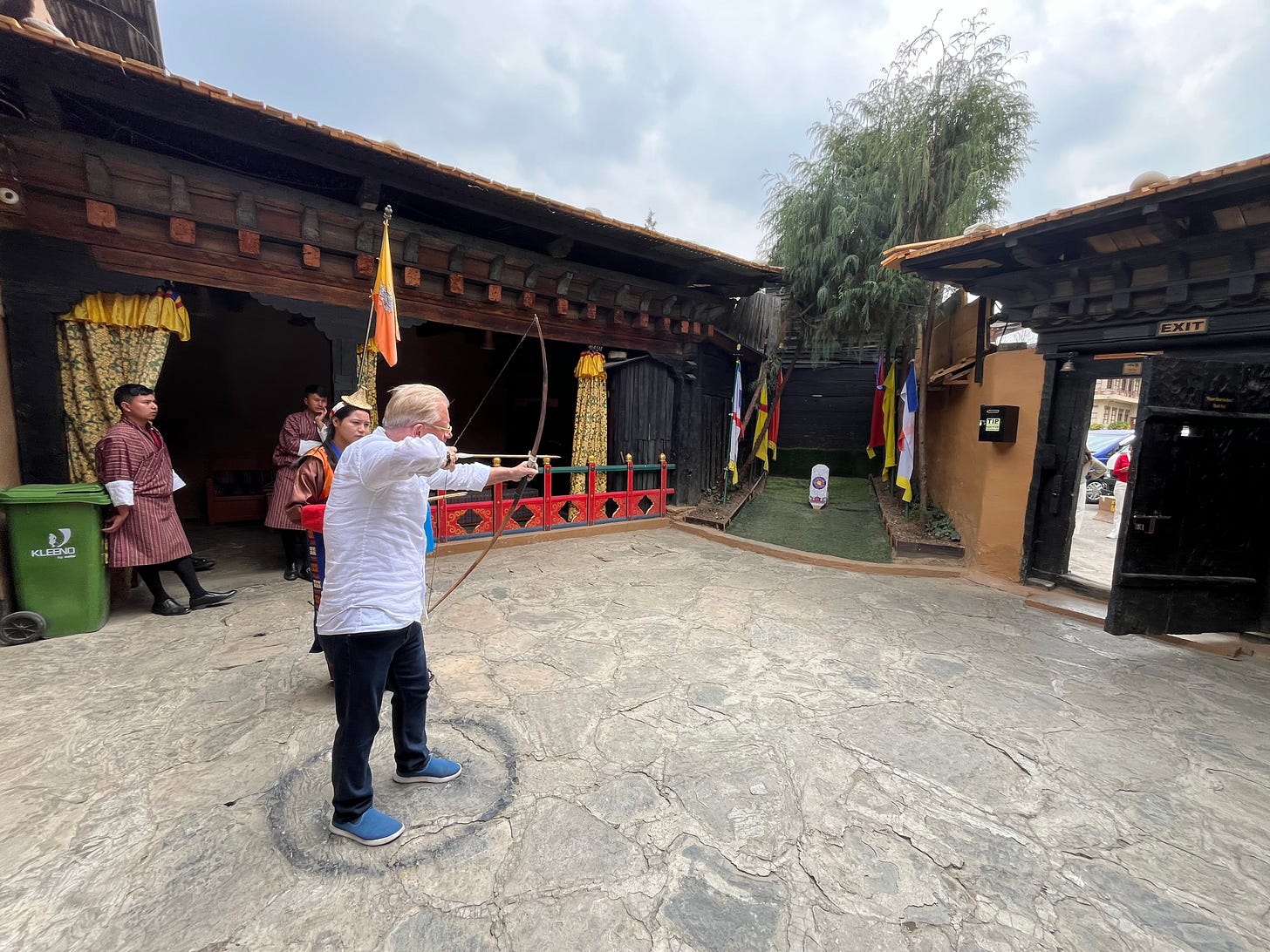

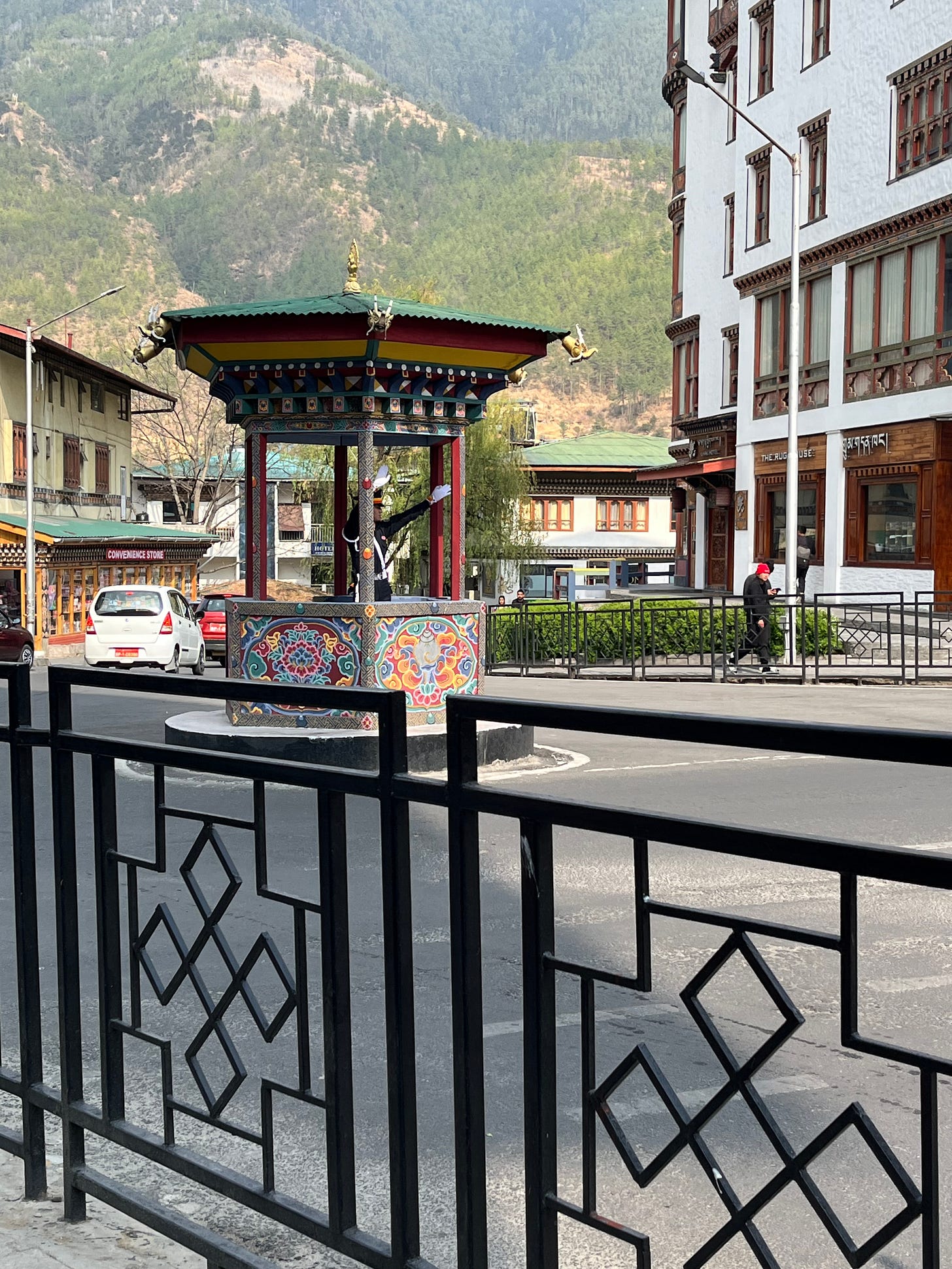
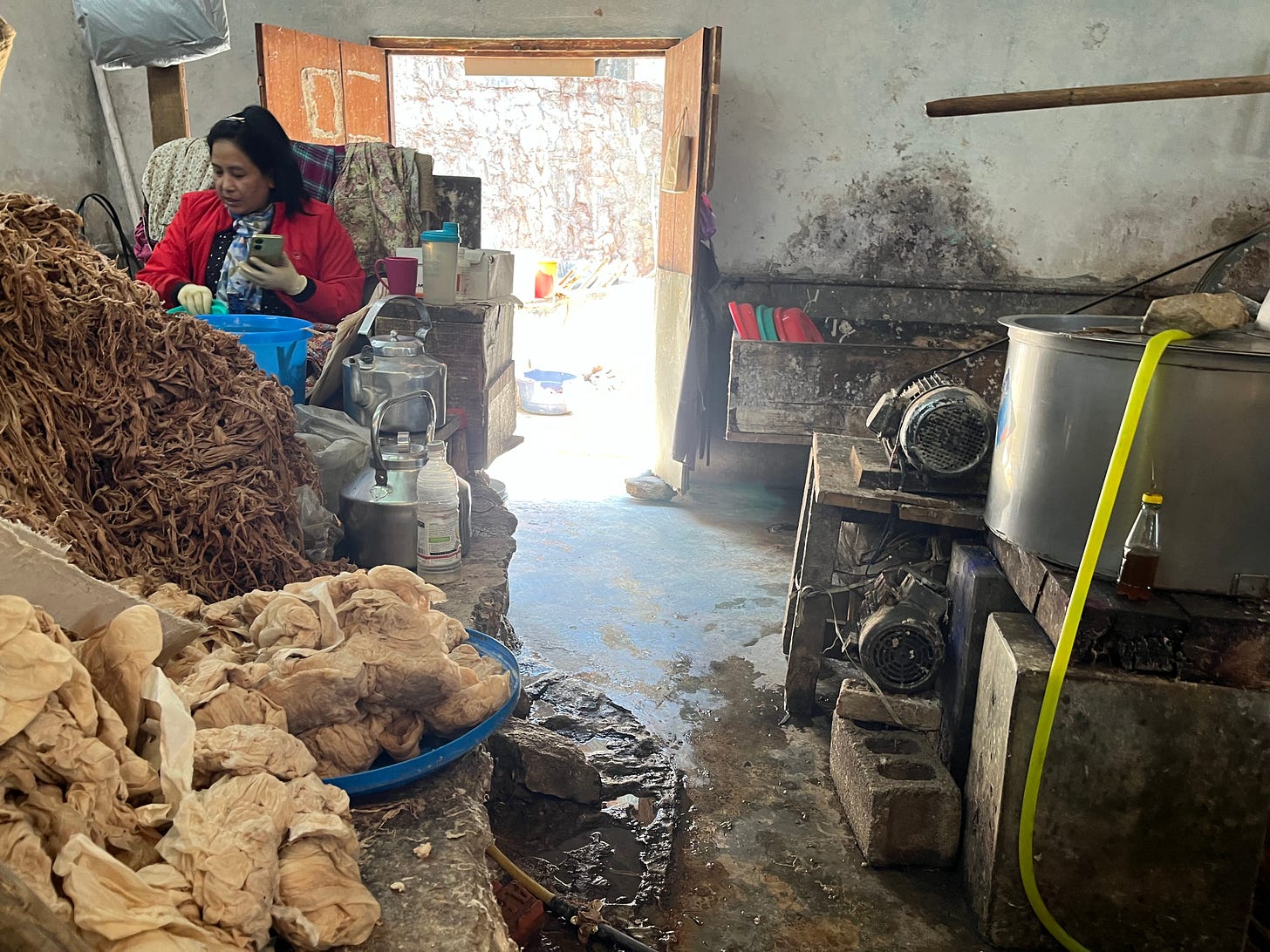
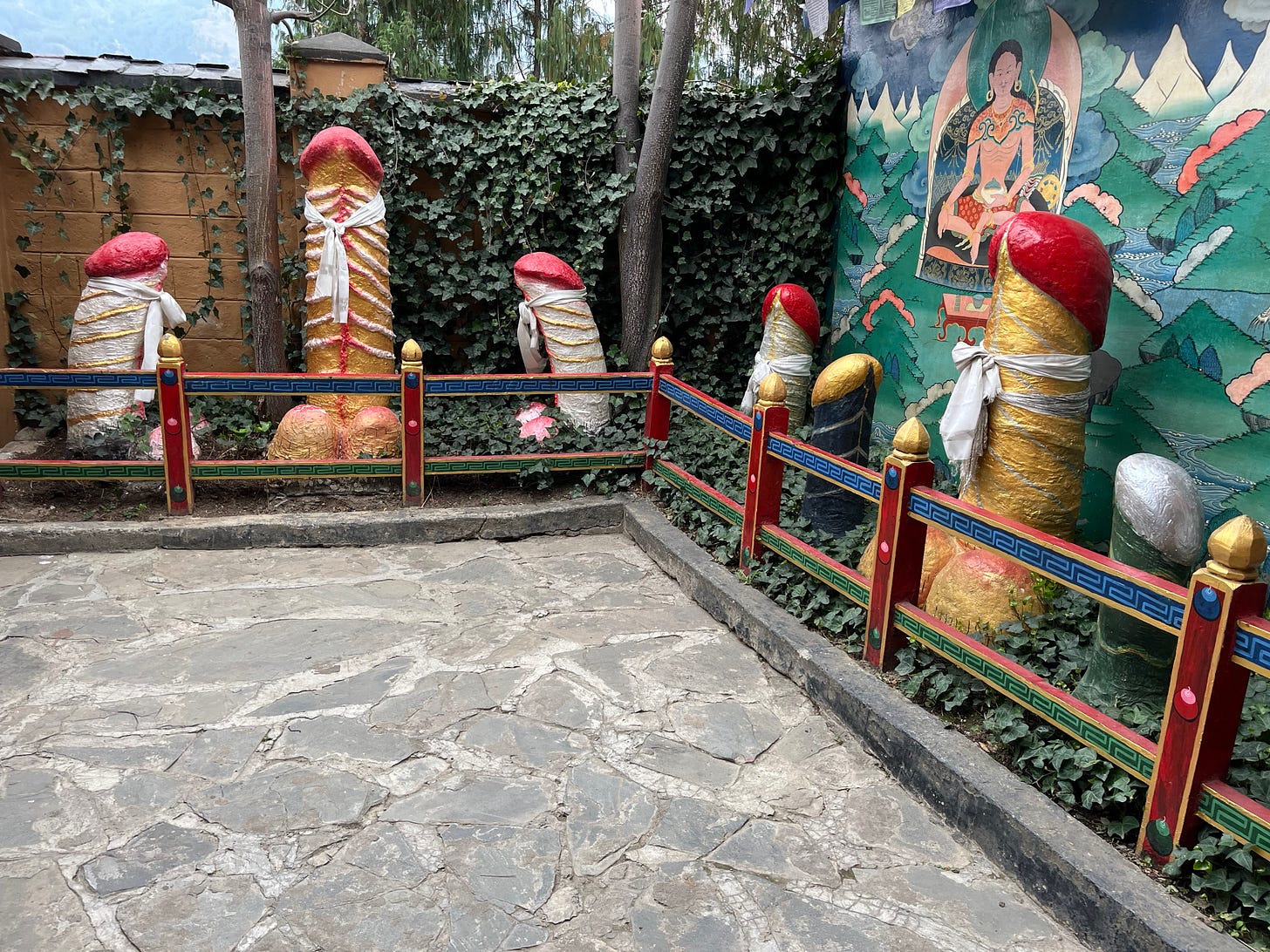
Take care,
Fred





